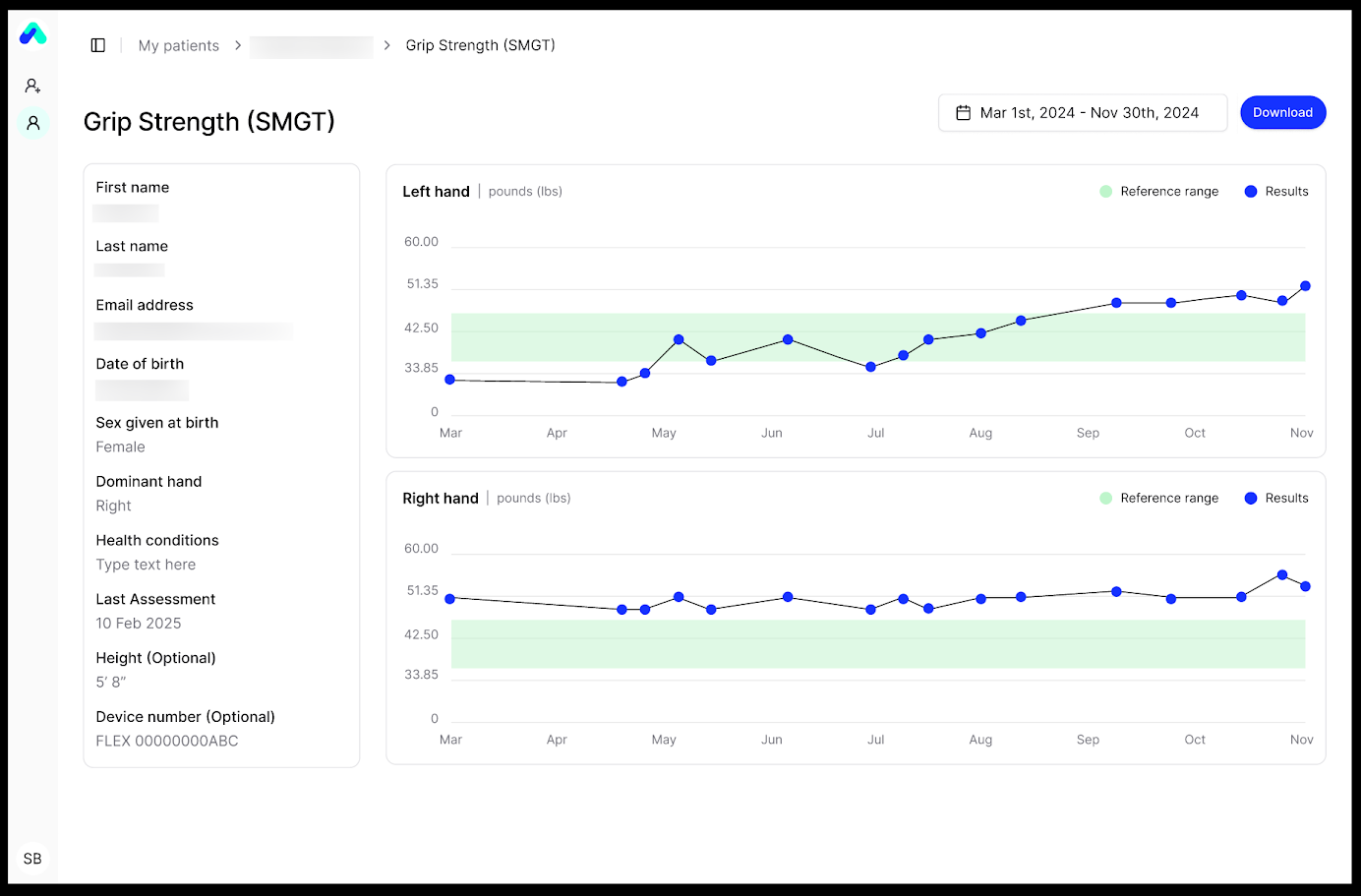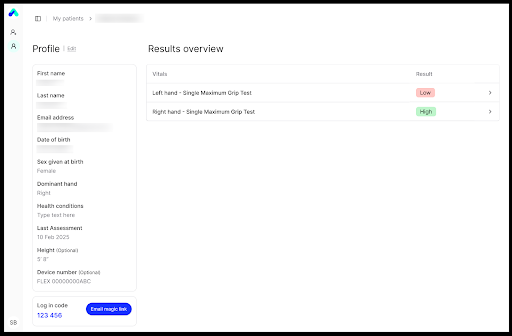In this guide, we explain the importance of measuring functional health and the wide-ranging benefits this can provide.
One fifth of the US population will be 65 or older by 2050. Expenditures on long-term services for the elderly are predicted to rise substantially as a result, the Congressional Budget Office concludes.
Over two-thirds of 65-year-olds are expected to require long-term support. Muscle weakness and loss leads to higher hospitalization costs, emphasizing the need for early detection and intervention.
Those with functional limitations face significantly higher healthcare costs compared to peers without disabilities, ASPE has proven. Functional limitations impact 14% of the US population but account for 46% of healthcare expenditures.
Nearly half of older adults with chronic conditions and functional limitations drive over two-thirds of healthcare spending in their age group, averaging $14,173 annually. And the 5% of individuals requiring ADL/IADL assistance account for 23% of healthcare spending, with costs four times higher than the average.
Therefore, tracking functional health is critical to addressing the rising burden of chronic diseases and an aging population.
Functional health is often confused with functional medicine, but they’re not the same. While functional medicine focuses on treating the root cause of illness, functional health refers to your ability to perform everyday activities and maintain independence.
It is crucial to measure functional health, which is essentially an indicator for how well a body functions in daily life. Functional health is a critical aspect of healthspan. There is little value in placing emphasis on longevity if a poor quality of life results from limited functional health.
Grip strength is a simple yet powerful biomarker that correlates with functional health. Its ability to reflect systemic physiological changes makes it a valuable tool across clinical, research, and community settings.
The Connection Between Grip Strength and Health Outcomes
Evidence shows that grip strength is a crucial biomarker capable of predicting:
- Increased all-cause mortality: A systematic review encompassing over two million adults found that individuals with low muscular strength had a significantly higher risk of early death from all causes and cardiovascular disease (Garcia-Hermoso et al., 2018).
- Cardiovascular mortality: Grip strength has been shown to better predict cardiovascular mortality than traditional risk factors such as systolic blood pressure (Leong et al., 2015).
- Physical disability and frailty: Declining grip strength is strongly correlated with sarcopenia, dynapenia (loss of strength with aging), and frailty, conditions that reduce independence and increase hospitalizations (Cruz Jentoft et al., 2014).
- Economic burden: Population-level reductions in low grip strength can yield significant healthcare savings. A 10% reduction in low muscular strength prevalence is linked to an estimated 18% reduction in healthcare expenditure (Garcia-Hermoso et al., 2018).
In our extensive collection of grip strength articles, learn more about grip strength as a valuable indicator for a wide range of health conditions and diseases.
Grip Strength is a Quick, Easy Way to Measure Functional Health
Clinical Validity and Feasibility of Grip Strength
Grip strength has been widely adopted as a reliable, non-invasive, and cost-effective biomarker across the healthcare continuum:
- Simple, quick, and accessible: Hand grip strength measurement is non-invasive, safe, and quick to perform using a handgrip dynamometer. It requires minimal training for administration, produces immediate results, and can be conducted in diverse settings, including hospitals, clinics, and homes, making it suitable for clinical, research, and community applications.
- Reliable and scalable: hand grip strength assessments are highly reproducible with standardized dynamometers, ensuring consistent and accurate results across individuals of all ages. Compared to complex whole-body strength tests, hand grip strength demonstrates low exclusion and dropout rates in large studies, increasing its feasibility and scalability for widespread use.
- Affordable and cost-effective: Advances in technology have made handgrip dynamometers more affordable, with lower-cost devices providing comparable accuracy to higher-cost alternatives. This cost-effectiveness allows for broad adoption in preventive care, longitudinal health monitoring, and population-level health assessments.
To learn more about how to choose the right hand dynamometer for different healthcare settings, read our comprehensive hand dynamometry guide.
How to Integrate Grip Strength into Healthcare Workflows
Grip strength measurement can be seamlessly integrated into clinical workflows with the right tools and strategies.
Able Care’s streamlined Grip Strength Solution and evidence-based protocols make it easy for healthcare providers to incorporate grip strength assessments into routine practice across hospital, community, and at-home settings.
The Able Assess app provides a digital step-by-step protocol, making the platform suitable and easy for remote use. Clinicians can show patients how to use the app and sensor the first time but after that, patients can folllow the step-by-step protocol on the app without supervision and still get accurate grip strength readings.
Our technology suite simplifies the incorporation of grip strength measurement into diverse healthcare environments:
- At Home: Our Able Assess platform empowers patients to self-assess their grip strength, contributing to proactive care and longitudinal health tracking. Remote monitoring capabilities allow clinicians to stay updated on patient progress without requiring frequent in-person visits.
- Hospitals: In pre-operative assessments, the Able Assess platform allows clinicians to quickly measure grip strength as part of patient risk stratification protocols. Real-time feedback enables informed surgical planning and postoperative care.
- Clinics: Community-based providers can use the GripAble sensor to assess frailty, falls risk, or treatment progress in chronic disease management. Its portability and ergonomic design ensure consistent use in busy outpatient settings.
Guidelines for Data Interpretation

Interpreting grip strength measurements is straightforward with Able Assess, which provides clear benchmarks and insights:
- Normative Comparisons: Data is automatically compared to global normative datasets, enabling clinicians to assess a patient’s grip strength relative to age- and gender-specific thresholds.
- Clinical Cut-Offs: The platform highlights key thresholds that indicate health risks, such as frailty or increased morbidity. For example, grip strength below 26 kg in men or 16 kg in women is commonly associated with increased mortality risk.
- Trend Analysis: Longitudinal tracking allows healthcare providers to detect subtle changes in grip strength over time, supporting early interventions and personalized care planning.
Tracking Changes Over Time
Continuous monitoring is essential for capturing the dynamic nature of a patient’s functional health. GripAble technology facilitates this through:
- Longitudinal Data Visualization: Clinicians can easily track changes in grip strength over weeks, months, or years, identifying trends that may signal emerging health risks.
- Actionable Alerts: Our platform uses predictive analytics to flag concerning trends, prompting timely interventions before significant health events occur.

Healthcare providers and patients who have adopted GripAble highlight its transformative impact:
“The GripAble device has streamlined our ability to monitor grip strength. The real-time feedback allows us to make immediate clinical decisions, and patients find the device intuitive to use.”
Dr. Anna Clarke, Physiotherapist
“Using the GripAble hand dynamometer at home has been simple and motivating. I can track my progress over time and share the data with my doctor remotely.”
David, Post-Surgical Patient
Grip Strength: A Critical Functional Health Biomarker
Grip strength has emerged as a cornerstone biomarker in modern healthcare, offering unparalleled insights into a patient’s physical resilience, functional capacity, and overall health trajectory.
Its predictive power across diverse clinical conditions, combined with its simplicity and non-invasive nature, makes it an indispensable tool for assessing health and guiding interventions.
The shift toward preventative and value-based care underscores the necessity of adopting proactive health metrics like grip strength.
Unlike reactive biomarkers that capture health conditions only after they manifest, grip strength serves as a leading indicator. It empowers clinicians to identify risks early, stratify patient populations effectively, and tailor interventions to individual needs.
With healthcare systems facing mounting pressure to manage aging populations and rising chronic disease burdens, integrating grip strength into routine practice is essential.
Routine grip strength monitoring aligns seamlessly with the shift toward proactive, patient-centered healthcare. As a metric that bridges physical, functional, and metabolic health, grip strength offers a comprehensive view of patient well-being over time.
Leveraging this data:
- Patients become empowered participants in their health journeys, tracking their progress and understanding their risks.
- Clinicians gain actionable insights for earlier interventions, more accurate diagnoses, and personalized care plans.
- Healthcare systems benefit from cost savings, resource optimization, and improved patient outcomes, all while advancing value-based care goals.
Able Assess Makes Measuring Functional Health Simple
By addressing long-standing challenges with traditional tools, Able Assess has set the standard for reliable, accessible, and actionable grip strength assessments across hospital, community, and at-home settings.
The future of healthcare lies in proactive, data-driven approaches that anticipate risks and foster resilience.
We invite healthcare providers to join in advancing the clinical and research applications of grip strength as a functional health measure. Together, we can drive better outcomes for patients, clinicians, and systems worldwide.
Our market-leading technology and data platforms drive early detection of functional health issues such as falls risks, track outcomes, and support true value-based healthcare.
Please don’t hesitate to contact us at hello@able-care.co or contact us for more information.

